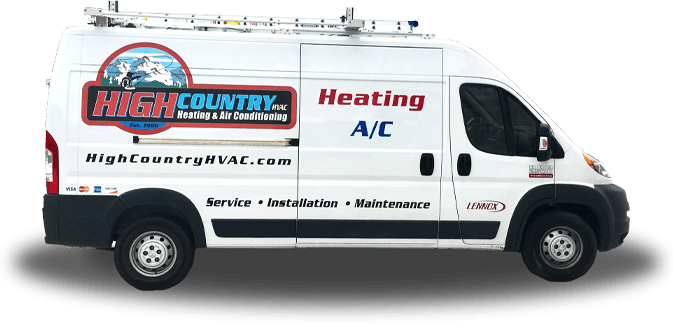Should my Thermostat be Set to Auto or On?

One of the common questions we receive at High Country HVAC is whether the thermostat should be set to “Auto” or “On.” Understanding the difference between these settings and how they affect your HVAC system can help you make the best choice for your home comfort and energy efficiency.
Understanding “Auto” and “On” Settings
“Auto” Setting
When your thermostat is set to “Auto,” the fan only runs when the system is actively heating or cooling your home. Once the desired temperature is reached, the fan stops. This setting offers several advantages:
- Energy Efficiency: Since the fan runs only when needed, the “Auto” setting can save energy and reduce your utility bills.
- Longer System Life: By reducing the amount of time the fan is running, you can decrease wear and tear on your HVAC system, potentially extending its lifespan.
- Humidity Control: When set to “Auto,” the system can better control humidity levels, especially during cooling cycles, by allowing moisture to drain properly when the fan is off.
“On” Setting
When the thermostat is set to “On,” the fan runs continuously, regardless of whether the system is heating or cooling. Here are some pros and cons of using this setting:
- Consistent Air Circulation: Continuous fan operation helps maintain more even temperatures throughout your home and can improve air quality by constantly filtering the air.
- Reduced Wear on Fan: While this may seem counterintuitive, the fan motor might experience less stress from starting and stopping repeatedly, which can happen with the “Auto” setting.
- Higher Energy Costs: Running the fan continuously can increase your energy consumption and result in higher utility bills.
- Inconsistent Humidity Control: Continuous fan operation can reintroduce moisture back into your home, making humidity control less effective.
Which Setting Is Right for You?
The choice between “Auto” and “On” depends on your specific needs and preferences:
- For Energy Savings: If your primary concern is reducing energy consumption and lowering utility bills, the “Auto” setting is typically the better choice.
- For Improved Air Circulation and Filtration: If you want to improve air circulation and maintain consistent temperatures throughout your home, the “On” setting may be more suitable.
- For Humidity Control: If controlling humidity levels is important, especially in humid climates, the “Auto” setting is generally more effective.
Conclusion
Both the “Auto” and “On” settings have their advantages and disadvantages. At High Country HVAC, we recommend considering your specific needs, energy efficiency goals, and comfort preferences when choosing the best setting for your thermostat. If you have any questions or need assistance with your HVAC system, our team of experts is here to help. Contact us today for professional advice and support in optimizing your home’s comfort and efficiency. Ask us about our heating and cooling solutions!


